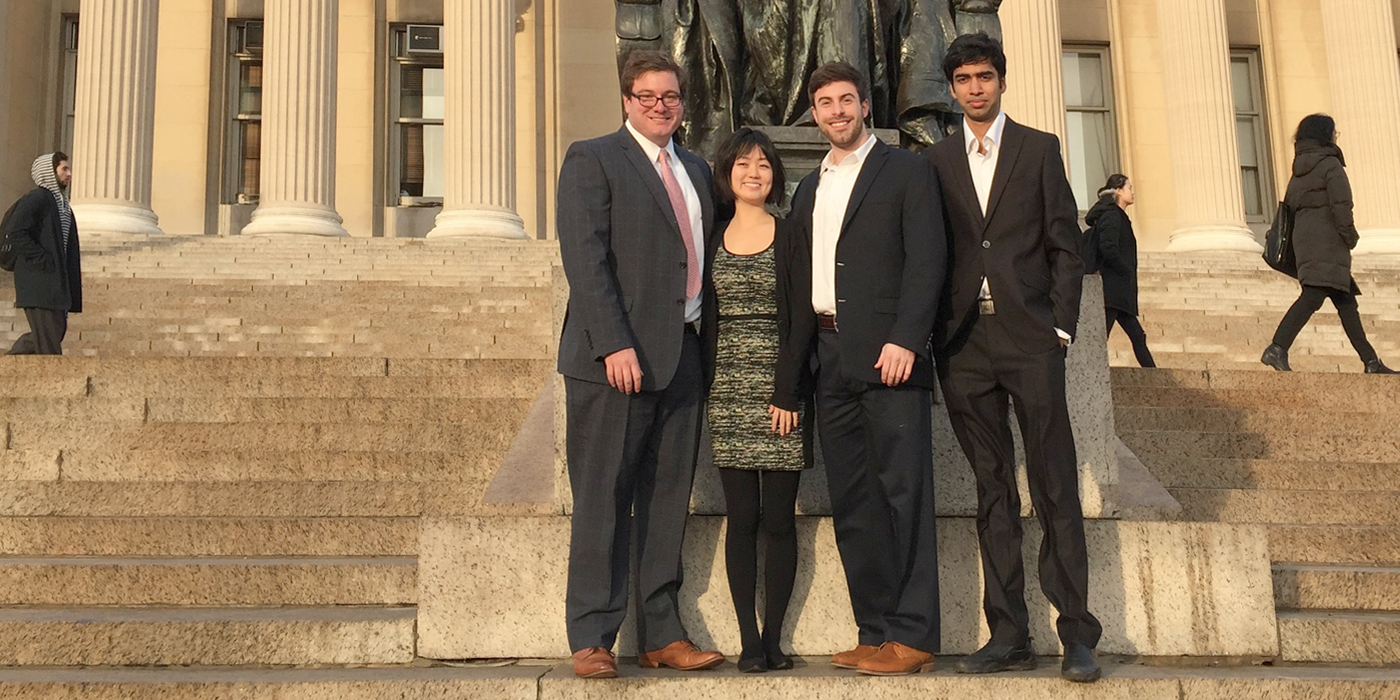EST&P Students Take 2nd at Columbia University's Energy Week Case Competition

The Energy Science, Technology and Policy master’s program was well represented at CU Energy Week. Nine EST&P students traveled to Columbia University in NYC, NY to participate in a case competition during CU Energy Week on February 2-3, 2017. The competition was sponsored by Booz Allen Hamilton and featured a proposal where a hypothetical utility company was to evaluate the financial feasibility of a ‘Virtual Power Plant’ – a concept where distributed energy resources are aggregated and used to direct power flow to locations that demand more power at any given time. The case involved analyzing their operating structure based on installed generating capacity, demand curve distributions, customer type, and rate structure. Theoretically, this concept could be used effectively by utility companies instead of having to invest in expensive ‘peaker plants’ that would need to be switched on to provide power during peak demand timings. In addition to evaluating the financial feasibility of this concept, teams were also tasked with petitioning their local Public Utilities Commission in allowing them to charge a higher price for electricity from their customer base in order to cover their investments.
Second place was awarded to the EST&P student team included Adam Goldstein, , Yoolhee Kim and Vasudevan Nambeesan, and Andrew Sams. The team spent a large amount of time constructing a model which simulated the company’s energy mix meeting the demand overtime in two different scenarios: (1) business as usual (renewable increase up to the renewable energy standards) and (2) new partnership with increased investments in energy storage and demand response technologies. This model enabled them to capture the energy generation by source type, break this down into relative amounts of utility scale and distributed sources, forecast the number of customers that would need to participate in their distributed energy programs, and attribute retail sales and wholesale to neighboring markets by each generation type. With this information, they constructed a more detailed model with research information regarding operating costs, capital costs, retail prices, and forecasts overtime. They used Matlab to run a Monte Carlo simulation of outcomes with sensitivity attributed to a range of variables with uncertainty. Finally, they utilized decision trees and a real options calculation to determine the value of the business opportunity and what we should be willing to pay for it today as a utility. Their model was highly appreciated by the judges and elicited an enthusiastic approval by other teams present in the competition.
The second EST&P student team included Ashwin Kumar Balaji, Akhil Mathur, Siddharth Padmanabhan, Akshay Patil, and Zeal Shah. Their team approached this problem by creating a model that optimized the distribution of energy sources by fuel type in both the current and future scenarios. They proceeded to use this model to allocate the utility’s capital, after accounting for debt and equity payments, for further upgrades. Finally, they used the concept of ‘Fair value rate of return’ to determine the maximum percentage of tariff increase they would need to request the local PUC. The judges praised their understanding of regulatory principles and applauded their practical approach to this solution.
This case competition provided the students with great insight into evaluating the realities of implementing clean energy technologies and both teams had a great experience in forming their responses to the problem statement (in addition to exploring NYC as well!).
